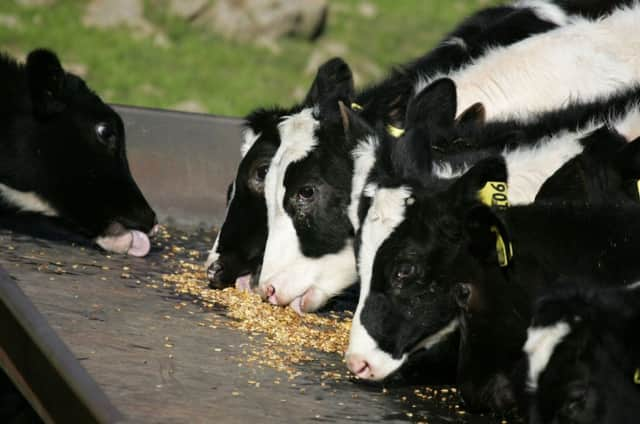Much to digest in ‘gas to grid’ energy


WHILE shale gas has grabbed most of the headlines in recent months, another form of unconventional gas has quietly been establishing itself in Scotland.
Scotland’s first “gas to grid” anaerobic digestion project in Coupar Angus, Perthshire, came on line towards the end of 2014 and a number of others are currently in various stages of development. There is no doubt that commercial scale anaerobic digestion gas-to-grid has arrived in Scotland.
Advertisement
Hide AdAdvertisement
Hide AdAnaerobic digestion (AD) is a natural process where, in the absence of oxygen, organic material is broken down by bacteria to produce biogas. The technology is not new. AD plants producing biogas have been widely used for some time. The gas produced was typically used for on-site heating or for the production of electricity. However, if there is no on-site or neighbouring demand for heat, then using the gas to solely produce electricity only uses around 30-35 per cent of the energy in the gas.
A far more efficient method of harnessing the energy content, and one with reduced emissions, is to clean up the gas and inject it into the gas grid – into the pipeline networks that supply our homes and businesses, bringing green gas to all. By selling into the grid, developers of projects create a market; no longer are they concerned with the financial stability of a single on-site user of gas. It also has a number of other potential benefits.
The recent headlines in relation to milk pricing further emphasises the need for farmers to continue to look for means of diversification. Using slurry, silage and crops as AD feedstock means financially advantageous, stable, long-term supply agreements for farmers. In addition, the by-product of the AD process is a nutrient-rich organic fertiliser that can be returned to the fields in a virtuous cycle.
AD is a proven method of diverting organic waste from landfill (with the added benefit of revenue generation from gas sales). Local authorities are actively seeking off-takers for food waste, providing a consistent source of feedstock for project developers.
Long-term committed supply of feedstock is critical to the success of any AD project. Department for Environment, Food and Rural Affairs has indicated that approximately seven million tonnes of food waste per year and about 90 million tonnes of animal slurry and manure is produced in the UK that could be used for AD.
Injection into the gas grid can only occur where the gas grid exists, and so is unlikely to be viable in rural areas off gas grid. However, as the market develops and technology prices decrease, there is no reason why smaller AD sites can’t arrange to transfer the gas to a local clean-up and injection hub.
Under the EU’s Renewable Energy Directive 2009, the UK has aggressive targets to increase production of renewable heat to 12 per cent of the UK’s total heat demand by 2020. Gas-to-grid can make a substantial contribution to this target if we fully embrace distributed green gas production driven by consortia of local farmers and the prohibition from 2020 under the Waste (Scotland) Regulations 2012 on diverting food waste to landfill.
Like many of the nascent renewable industries, gas-to-grid is being driven by favourable UK government incentives, in this case the Renewable Heat Incentive (RHI). This is a fixed 20-year index-linked subsidy. The potential returns on larger projects are significant.
Advertisement
Hide AdAdvertisement
Hide AdHowever, there is perpetual uncertainty over the potential reduction by the Department of Energy and Climate Change of the RHI tariff rates, making long term planning of complex capital-intensive projects challenging. Unlike electricity tariffs where there is a pre-accreditation process that can lock in the 20-year tariff prior to construction commencing, developers and investors of AD seeking to rely on RHI have no certainty as to the eventual tariff rate until the plant is commissioned and gas is being exported to the grid. A General Election will add another layer of complexity to decision-making by funders.
Enduring industries are not built overnight, but the steps taken in the last 12 months towards greater use of green gas must be cultivated and embedded as an important part of Scotland’s affordable low carbon future.
• Martin Whiteford is a senior associate in Anderson Strathern’s energy team www.andersonstrathern.co.uk